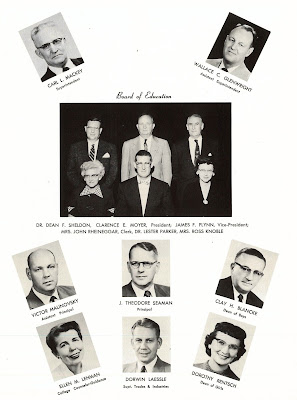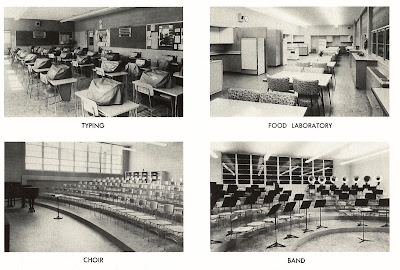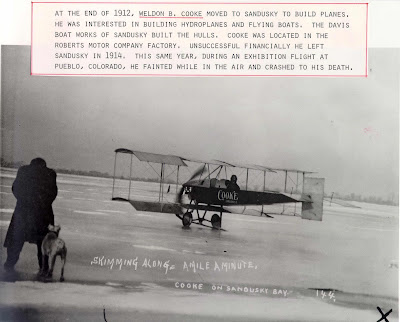The new Sandusky High School was
considered “a dream come true” when it was dedicated on October 22, 1957.
According to Superintendent of Schools, Carl L. Mackey, an eighteen acre plot
of land at the corner of Hayes and Perkins Avenues was purchased for $13,000 in
1946, following a study by the Bureau of Educational Research of Ohio State
University. The study had recommended that the school be built in close
proximity to the stadium at Strobel Field.
In 1954 voters of Sandusky passed a bond issue of $3,740,000, to be used
for the construction and equipping of a new Sandusky High School building. School officials and Board of Education were pleased
with the overwhelming approval of local residents for the exciting new project.

Architects for the new school were
Mclaughlin and Keil from Lima, Ohio. Contractors included Knowlton Construction,
Utilities Line Construction, J.F. Stephens Company and E.W. File and Son.
Several local firms also worked on site development. Before
the formal dedication of the school building on October 22, 1957, an estimated
20,000 people toured the new school in pre-dedication open house tours.

At the formal dedication, several flags were given to
the school. Mayor Richard B. Fuller gave a civic testimonial. The dedication
address was presented by Dr. Edward E. Holt, the State Superintendent of Public
Instruction. Superintendent Mackey also spoke, and local clergy gave the invocation and
benediction. The program for the
dedication included a message from Mr. Mackey in which he explained that the
school was designed to the meet the educational needs of Sandusky's young people
for many years to come. The new school provided for many new classes in
science, business and English, and allowed for additional course offerings in
Industrial Education. Each teacher had his or her own classroom, which
eliminated the need for “traveling teachers” who had to move from room to room
in the old school building. Several photographs of classrooms in the new
Sandusky High School were included in the program.

In this page from the dedication program, entitled
“Campus Looking East,” you can see the high school and the stadium:
The Sandusky Register published a special section in the October 22,
1957 issue to commemorate the dedication of the new Sandusky High School building. This feature included details about school leaders, the contractors for the
project, and several pages of advertisements from businesses associated with
the construction of the new school, as well as many local companies giving messages
of congratulations on a job well done.

 this blog
this blog























































